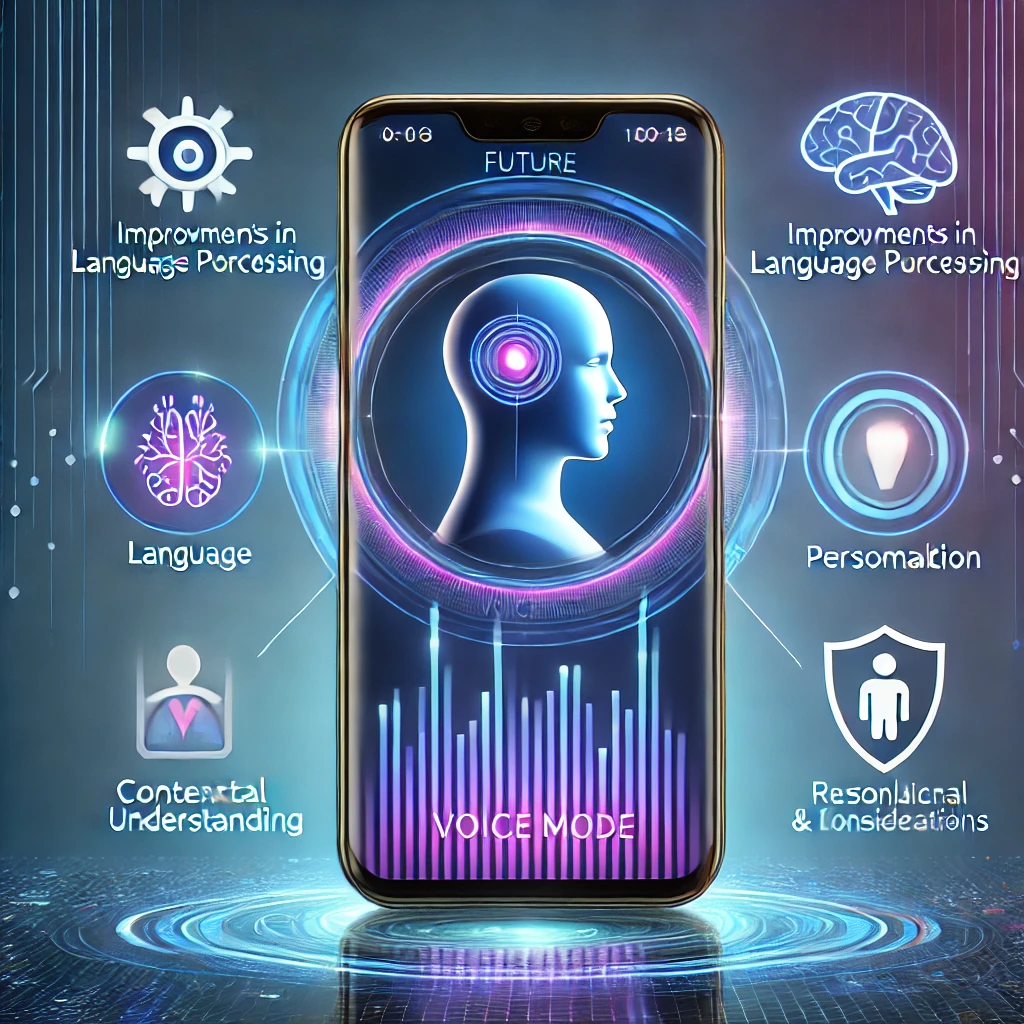Introduction to OpenAI Voice Mode
The recent launch of OpenAI Voice Mode marks a significant advancement in the field of artificial intelligence, particularly in how we interact with our devices. OpenAI, a leader in AI research and development, has introduced a new feature that allows users to converse naturally with their phones rather than just issuing commands. This innovative approach to voice interaction could revolutionize the way we engage with technology, setting a new standard for AI-driven voice interactions. As OpenAI Voice Mode gains traction, it raises important questions about the future of voice technology, its potential applications, and the regulatory considerations that come with such advancements.
What’s New in OpenAI Voice Mode?
OpenAI Voice Mode is designed to provide a more intuitive and human-like interaction between users and their devices. Unlike traditional voice assistants that often require specific commands, OpenAI Voice Mode allows for more fluid and conversational exchanges. This feature is not just a technological leap; it represents a shift in how we might use and perceive voice-activated technology in our daily lives.

Latest Developments
| Date | Event | Impact |
|---|---|---|
| August 2024 | OpenAI launches Voice Mode, enabling natural conversation with devices | Enhances user experience, setting a new standard for AI-driven voice interactions |
| July 2024 | Early testers report significantly improved engagement with AI through Voice Mode | Positive feedback suggests broad potential for adoption across various industries |
| June 2024 | Developers begin integrating OpenAI Voice Mode into third-party applications | Expands the reach of this technology beyond OpenAI’s own platforms |
| May 2024 | OpenAI announces plans to introduce regulatory compliance features in Voice Mode | Addresses concerns about data privacy and user security |
These developments underscore the rapid evolution of voice technology and its potential to transform user interactions with their devices. OpenAI Voice Mode is at the forefront of this change, promising to make voice interactions more natural and accessible.
Key Updates You Need to Know
As OpenAI Voice Mode continues to evolve, several key updates have emerged that highlight the most significant changes and their implications for the tech industry and users alike.

1. Natural Conversation Capabilities
The most notable feature of OpenAI Voice Mode is its ability to facilitate natural conversations with devices. Unlike previous voice-activated technologies that relied on specific commands, OpenAI Voice Mode allows users to speak in a more natural and fluid manner. This advancement not only improves user experience but also opens up new possibilities for how voice interactions can be integrated into various applications, from customer service to personal assistants.
2. Integration with Third-Party Applications
OpenAI has made it possible for developers to integrate Voice Mode into their own applications. This move significantly broadens the potential impact of this technology, allowing it to be used across a wide range of platforms and industries. Whether in healthcare, education, or entertainment, the ability to have a natural conversation with AI could enhance user engagement and efficiency.
3. Regulatory Considerations
With the introduction of OpenAI Voice Mode, there are also new regulatory considerations to address. As this technology becomes more widespread, issues related to data privacy, security, and compliance with existing regulations will become increasingly important. OpenAI has already begun to incorporate features that address these concerns, ensuring that the technology is not only innovative but also responsible.
4. Impact on the Future of Voice Interaction
OpenAI Voice Mode represents a significant shift in how we think about voice interactions with AI. By making these interactions more natural, OpenAI is paving the way for broader adoption and more innovative uses of voice technology. This could lead to a future where voice becomes the primary mode of interaction with many devices, further integrating AI into our daily lives.
What’s Next?

As OpenAI Voice Mode gains popularity, its potential to reshape the landscape of voice interaction technology is becoming increasingly apparent. The ability to converse naturally with AI has far-reaching implications for both consumers and industries. For consumers, it means more intuitive and efficient interactions with their devices, reducing the need for repetitive commands and making technology more accessible. For industries, the integration of OpenAI Voice Mode into various applications could lead to increased productivity and user engagement.
Looking ahead, we can expect further enhancements to OpenAI Voice Mode, including improvements in language processing, contextual understanding, and personalization. These advancements will likely be driven by both technological innovation and user feedback as the feature continues to be tested and refined.
Moreover, as OpenAI Voice Mode becomes more widely adopted, we can anticipate a growing focus on regulatory compliance and ethical considerations. Ensuring that this technology is used responsibly, particularly in terms of data privacy and security, will be crucial as it becomes more integrated into everyday life.
Conclusion
The launch of OpenAI Voice Mode is a groundbreaking development in the field of AI and voice technology. By enabling natural conversations with devices, OpenAI is setting a new standard for voice interactions, making technology more accessible and intuitive for users. As this feature continues to evolve, it will have significant implications for both consumers and industries, driving innovation and potentially reshaping how we interact with technology.
However, with these advancements come important considerations, particularly in the areas of data privacy, security, and regulatory compliance. As OpenAI Voice Mode becomes more prevalent, it will be essential to address these issues to ensure that the technology is used responsibly and ethically.
Key Points
- OpenAI Voice Mode enables natural, conversational interactions with devices, representing a significant advancement in voice technology.
- The integration of Voice Mode into third-party applications broadens its potential impact across various industries.
- Regulatory considerations, particularly related to data privacy and security, are crucial as this technology becomes more widespread.
- The future of voice interaction could be significantly shaped by OpenAI Voice Mode, with potential applications ranging from customer service to personal assistants.
References
- TechCrunch. (2024). OpenAI’s New Voice Mode Lets Users Talk with Their Phones, Not to Them. Retrieved from https://techcrunch.com/2024/08/17/openais-new-voice-mode-let-me-talk-with-my-phone-not-to-it/
- The Verge. (2024). How OpenAI Voice Mode Could Change the Future of Voice Interaction. Retrieved from https://www.theverge.com/2024/08/18/openai-voice-mode-future-voice-interaction
- Wired. (2024). OpenAI’s Voice Mode and the Future of AI-Driven Conversations. Retrieved from https://www.wired.com/story/openai-voice-mode-future-ai-conversations
- Bloomberg. (2024). Regulatory Implications of OpenAI’s New Voice Mode. Retrieved from https://www.bloomberg.com/news/articles/2024-08-18/regulatory-implications-openai-voice-mode
- YouTube. (2024). OpenAI Voice Mode: A Game Changer for Voice Interaction? [Video]. Retrieved from https://www.youtube.com/watch?v=example
